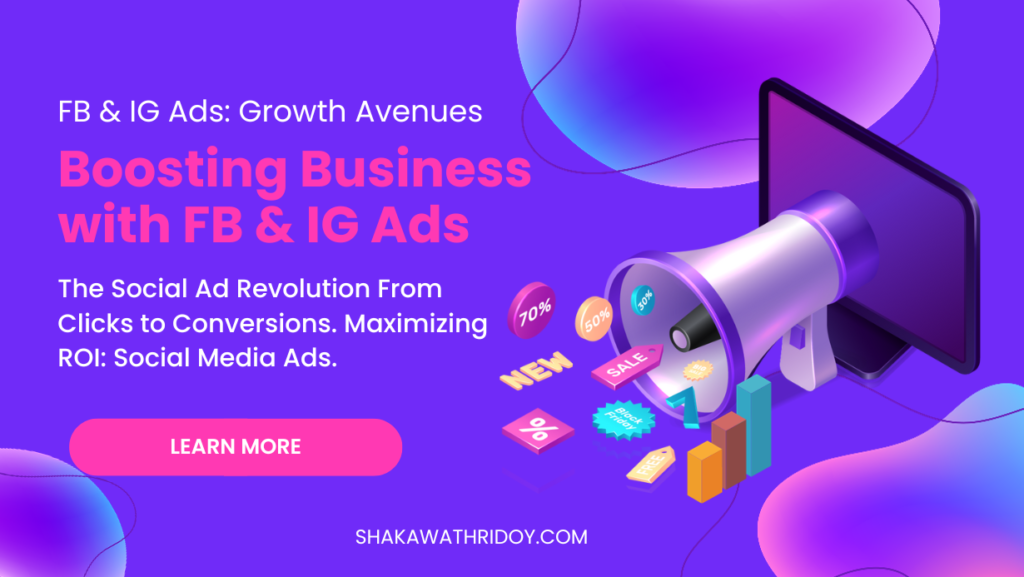In today’s digital age, the importance of social media advertising cannot be overstated. With billions of active users, platforms like Facebook and Instagram have become essential tools for businesses aiming to expand their reach and drive growth. This article delves deep into the SEO benefits of Facebook and Instagram advertising and how businesses can harness their potential for unparalleled success.
1. The Landscape of Social Media Advertising
Before we dive into the specifics, it’s crucial to understand the broader landscape of social media advertising. Facebook, with its 2.8 billion users, and Instagram, boasting over a billion, are not just platforms for sharing photos or updates. They are powerful marketing tools that, when used effectively, can significantly boost a brand’s visibility and customer engagement.
2. SEO and Social Media: The Connection
Many often wonder, “How does social media advertising impact SEO?” The answer lies in the intertwined relationship between social signals and search engine ranking. While social signals (likes, shares, comments) are not direct ranking factors, they influence factors that search engines do consider, such as:
- Traffic Volume: Effective social media ads can drive significant traffic to your website. Search engines view this increased traffic as a sign of a site’s credibility and relevance.
- Link Building: Quality content shared on social platforms can lead to backlinks from other websites, further boosting SEO.
- Brand Awareness: The more your brand is mentioned and recognized on social platforms, the more likely it is to be searched on search engines.
3. Facebook Advertising: Beyond Just ‘Likes’
Facebook’s advertising platform offers a plethora of options tailored for different business objectives:
- Dynamic Ads: Automatically show the right products to people who have expressed interest on your website, in your app, or elsewhere on the Internet.
- Lead Generation Ads: Collect lead information, like emails, without making users leave the platform.
- Retargeting: Re-engage users who’ve interacted with your brand but haven’t converted.
By optimizing your Facebook ads for SEO, you ensure that the content aligns with what users are searching for, leading to better engagement and higher click-through rates.
4. Instagram Advertising: A Visual Powerhouse
Instagram’s visual-centric platform is perfect for brands looking to showcase their products or services in a compelling manner:
- Story Ads: Capture the attention of users with full-screen ads that appear between stories.
- Shopping Ads: Allow users to shop directly from your posts, creating a seamless shopping experience.
- IGTV Ads: Engage users with longer-form video content and monetize your IGTV channel.
To harness the SEO benefits of Instagram advertising, ensure that your content is not only visually appealing but also relevant to what your target audience is searching for.
5. Best Practices for SEO-Focused Social Media Advertising
- Keyword Integration: Ensure that your ads incorporate relevant keywords that your target audience is likely to search for.
- Engaging Content: Create content that resonates with your audience, encouraging shares, comments, and other social signals.
- Consistent Branding: Maintain a consistent brand voice and imagery across all ads to improve brand recall and searchability.
- Monitor and Optimize: Regularly analyze the performance of your ads and optimize them based on insights.
6. Conclusion
Harnessing the potential of Facebook and Instagram ads is not just about increasing social engagement. It’s about creating a holistic digital strategy that boosts your SEO, drives traffic, and ultimately, fosters business growth. By understanding the SEO power of social media advertising and implementing best practices, businesses can unlock new avenues of success in the digital realm.
FAQs
Delving Deeper into Facebook and Instagram Advertising for SEO
Q1: How do I choose the right keywords for my social media ads?
A1: Choosing the right keywords is crucial for the success of your ads. Start by conducting thorough keyword research using tools like Google Keyword Planner or SEMrush. Identify terms that your target audience is searching for and that align with your business offerings. Additionally, monitor the performance of your ads and adjust keywords based on what’s driving the most engagement.
Q2: Can I use the same ad content for both Facebook and Instagram?
A2: While both platforms are under the Facebook umbrella, they cater to different user behaviors. Instagram is more visual-centric, while Facebook allows for more text. It’s advisable to tailor your ad content to fit the unique characteristics of each platform, though maintaining a consistent brand message across both.
Q3: How do I measure the SEO impact of my social media ads?
A3: Directly measuring the SEO impact can be challenging since social signals aren’t direct ranking factors. However, you can monitor indirect metrics such as increased website traffic, improved engagement on your site, growth in branded search queries, and an uptick in backlinks resulting from your content being shared.
Q4: Are video ads more effective than image ads for SEO?
A4: Video content is increasingly popular and can drive higher engagement, which can indirectly benefit SEO. Videos can keep users on your page longer, signaling to search engines that your content is valuable. However, the effectiveness also depends on the quality and relevance of the video. It’s essential to test and see what resonates best with your audience.
Q5: How often should I refresh or update my ad content?
A5: Regularly updating your ad content ensures it remains relevant and engaging. Monitor the performance metrics of your ads. If you notice a decline in engagement or conversions, it might be time for a refresh. As a general rule, consider evaluating your ad content every 4-6 weeks.
Q6: Can boosting posts help with SEO?
A6: Boosting posts can increase their visibility, leading to higher engagement. While this doesn’t directly impact SEO, the increased visibility can lead to more shares, mentions, and possibly backlinks if your content is shared on other platforms or websites. All these can indirectly benefit your SEO efforts.

